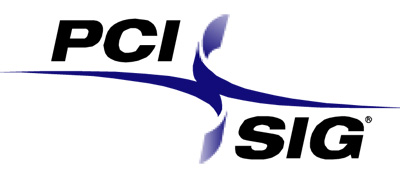AMD's Radeon HD 6990: The New Single Card King
by Ryan Smith on March 8, 2011 12:01 AM EST- Posted in
- AMD
- Radeon HD 6990
- GPUs
PCI-Express Compliance: Does It Even Matter?
For a while now we’ve been under the impression that video card size and power consumption was ultimately capped by the PCI-Express specification. At present time the specification and its addendums specify normal (75W), 150W, 225W, and 300W PCIe card operation. In the case of 300W cards in particular this is achieved through 75W from the PCIe slot, 75W from a 6pin PCIe power connector, and 150W from an 8pin PCIe power connector. As the name implies, the PCIe specification also defines what the 6pin and 8pin power connectors are supposed to be capable of, which is where 75W and 150W come from respectively.
Altogether the biggest, most powerful card configuration in the PCIe specification allows for a 12.283” long, triple-wide card that consumes 300W. To date we’ve never seen a card exceed the physical specifications, but we’ve seen several cards exceed the electrical specifications. This includes cards such as the 5970 and some overclocking-oriented 5870s that were designed to handle more than 300W when overclocked, and even more exotic cards such as the Asus ARES 5870X2 that simply drew more than 300W from the get-go. We have yet to see a reference design from AMD/NVIDIA however that exceeds any part of the PCIe specification by default.

So it has been clear for some time now that cards can exceed the PCIe specifications without incurring the immediately wrath of an army of lawyers, but at the same time this doesn’t establish what the benefits or losses are of being or not being PCIe compliant. To have a reference design exceed the PCIe specifications is certainly a new mark for the GPU industry, so we decided to get right to the bottom of the matter and get an answer to the following question: does PCI-Express compliance matter?
To answer this question we went to two parties. The first of which was of course AMD, whose product is in question. AMD’s answer basically amounts to a polite deflection: it’s an ultra-enthusiast card that at default settings does not exceed the power available by the combination of the PCIe slot and PCIe power connectors. Furthermore, as they correctly note, the 6990 is not the first card to ship at over 300W, as the ARES and other cards were drawing more than 300W a year ago. It’s a polite answer that glosses over the fact that no, the 6990 isn’t technically PCIe compliant.
To get a second opinion on the matter we went straight to the source: The Peripheral Component Interconnect Special Interest Group (PCI-SIG), which is the industry group that defines the PCIe standard and runs the workshops that test for product compliance. The PCI-SIG’s member list is virtually everyone in the computing industry, including AMD, NVIDIA, and Intel, so everyone has some level of representation with the group.

So what does the PCI-SIG think about cards such as the 6990 which exceed the PCIe specification? In a nutshell, they don’t directly care. The group’s working philosophy is closer to approving cards that work than it is about strictly enforcing standards, so their direct interest in the matter is limited. The holy grail of the PCI-SIG is the PCI Express Integrators List, which lists all the motherboards and add-on cards that have passed compliance testing. The principal purpose of the list is to help OEMs and system integrators choose hardware, relying on the list and by extension PCI-SIG testing to confirm that the product meets the PCIe standards, so that they can be sure it will work in their systems.
The Integrators List is more or less exclusively OEM focused, which means it has little significance for niche products such as the 6990 which is split between end-user installation and highly customized OEM builds. The 6990 does not need to be on the list to be sold to its target market. Similarly the 5970 was never submitted/approved for listing, and we wouldn’t expect the 6990 to be submitted either.
It is worth noting however that while the PCI-SIG does have power specifications, they’re not a principal concern of the group and they want to avoid doing anything that would limit product innovation. While the 300W specification was laid out under the belief that a further specification would not be necessary, the PCI-SIG does not even test for power specification compliance under their current compliance testing procedures. Conceivably the 6990 could be submitted and could pass the test, leading to it being labeled PCIe compliant. Of course it’s equally conceivable that the PCI-SIG could start doing power compliance testing if it became an issue…
At the end of the day as the PCI-SIG is a pro-compliance organization as opposed to being a standard-enforcement organization, there’s little to lose for AMD or their partners by not being compliant with the PCIe power specifications. By not having passed compliance testing the only “penalty” for AMD is that they cannot claim the 6990 is PCIe compliant; funny enough they can even use the PCIe logo (we’ve already seen a Sapphire 6990 box with it). So does PCIe compliance matter? For mainstream products PCIe compliance matters for the purposes of getting OEM sales; for everything else including niche products like the 6990, PCIe compliance does not matter.










130 Comments
View All Comments
HangFire - Thursday, March 10, 2011 - link
As usual no reply after the first few pages... or on the topic of Linux.If they only had any clue how many Linux workstations get ordered with "are you sure this has the top processor, top video card and most RAM available?" on a post-it note stuck on the Req.
Azfar - Wednesday, March 9, 2011 - link
Crysis Killer that is.....Finally !!Euchrestalin - Wednesday, March 9, 2011 - link
Why is this card named after Wedge Antilles? Why not Vader, Skywalker or my personal favorite Mitth'raw'nuruodo?gorgid - Wednesday, March 9, 2011 - link
I'm big RADEON fan. I had many ATI cards ( 3870 x 2 , 4870x 2, 5970 etc). Most of them water cooled. So i don't care about noise. My temperatures always at 40C ( for the chips) overclocked. I was planning to sell 5970 and get 6990, but after first reviews i decided to wait to see what NVIDIA will bring in form of GTX 590.The AMD made great first step with DirectX 11, cards came 6 month earlier then Nvidia.
First time ( may be not) ATI cards were on the top charts for long time.
But this time almost 1 1/2 years past since 5970 came to the market. 6990 shows about 20% gain of performance comparing to 5970. Why somebody would pay $700 for that kind of performance?
In my opinion NVidia will beat 6990 pretty easy, will take a crown and will keep it for a while.
Thank you all.
slickr - Wednesday, March 9, 2011 - link
I've read the review on most of the other English sites and there seems to be a big fluke in anand's battlefield benchmark.Seems like yet another shady bench.
Ryan Smith - Thursday, March 10, 2011 - link
We of course strive to make the best benchmark possible. So if you believe there is a problem, I'd like to hear what you think is amiss with our benchmarks. We can't fix things unless you guys chime in and let us know what you think is wrong.HangFire - Monday, March 14, 2011 - link
So, you do read past page 5 of the comments... but you still can't bring yourself to even mention Linux.We are working our contacts with AMD but can't get much out of them. I guess no news is bad news.
andy5174 - Thursday, March 10, 2011 - link
Is this performance based on AMD's image quality cheat?http://www.guru3d.com/article/exploring-ati-image-...
Ryan Smith - Friday, March 11, 2011 - link
That article is out of date as of Catalyst 11.1a.noxyucT(RUS) - Tuesday, March 15, 2011 - link
куда стока мощностей это же пздец,295 жифорс в несколько раз рвет.Интересно какой процессор участвовал в тесте, и7 ито не потянет такова монстра.Жесть кароче.